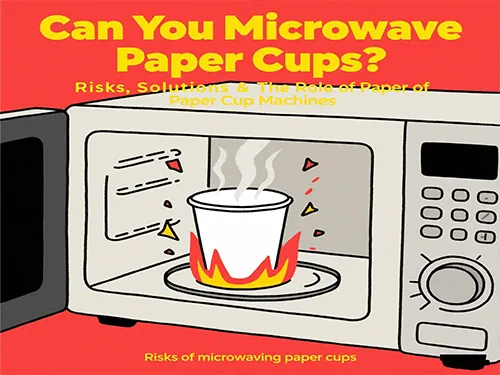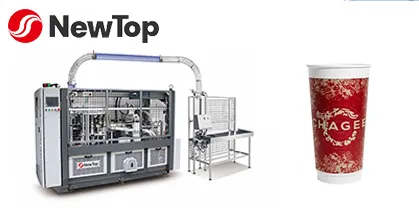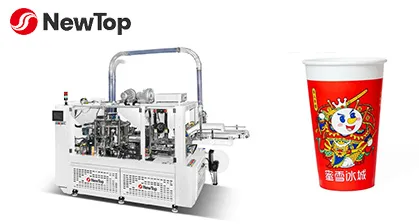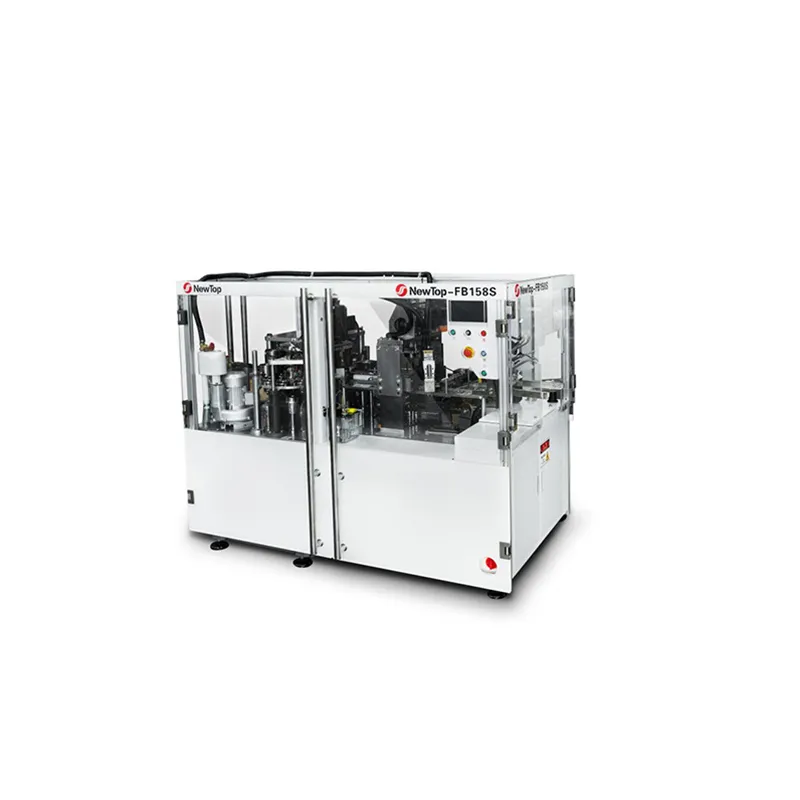New Debao people pursue the concept of high quality and technology leading.
By changing the working mode with intelligent paper cup machine to make the operation more and more simple.
Yes, some paper cups are microwave-safe, but most disposable ones are not. The safety depends on their materials, coatings, and manufacturing standards. Here’s a deep dive into the science behind microwaving paper cups—and what to watch out for.

1. Plastic Linings:
Most disposable paper cups are coated with a thin layer of polyethylene (PE) plastic to prevent leaks. While this makes them water-resistant, the plastic can melt or release harmful chemicals when exposed to high microwave temperatures (above 120°C/248°F). This poses health risks and may contaminate your drink.
2. Chemical Additives:
Some cups contain dyes, adhesives, or whitening agents (like fluorescent agents) that may leach into food when heated. Long-term exposure to these chemicals could have health implications.
3. Fire Hazards:
Overheating a dry paper cup in the microwave can cause it to scorch or ignite, especially if the cup has decorative elements like metallic inks or plastic films.
4. Structural Weakness:
Moisture from the beverage can weaken the paper fibers, causing the cup to collapse or leak when heated.
1. Look for "Microwave-Safe" Labels:
Some brands produce paper cups specifically designed for microwave use, using plant-based PLA (polylactic acid) coatings instead of PE plastic. Always check labels for certification.
2. Transfer to a Microwave-Safe Container:
For non-labeled paper cups, pour the contents into a glass, ceramic, or BPA-free plastic container before reheating.
3. Short Heating Times:
If you must microwave a paper cup, limit heating to 30 seconds or less on medium power to reduce risks.
4. Avoid Reusing Disposable Cups:
Single-use cups degrade quickly; reuse increases the likelihood of chemical leaching or structural failure.
Modern paper cup manufacturing machine play a pivotal role in creating safer, eco-friendly products. Here’s how:
1. Material Innovation:
Advanced machines can apply biodegradable coatings (e.g., PLA or water-based barriers) instead of traditional plastics. These coatings withstand moderate heat and decompose faster in landfills.
2. Precision Engineering:
High-speed machines ensure uniform coating thickness, reducing the risk of hotspots that might melt under microwave heat.
3. Eco-Friendly Production:
Many manufacturers now use machines designed for recycled paper or FSC-certified materials, minimizing environmental impact and chemical use.
4. Customization for Safety:
Brands can request microwave-safe designs, such as double-walled cups or heat-resistant adhesives, tailored by specialized paper cup machines.
Consumer demand for convenience and sustainability is driving innovation. Companies like KFC and Starbucks have already introduced compostable or reusable cups with safer linings. Meanwhile, paper cup production machine manufacturers are investing in R&D to create fully recyclable, plastic-free cups that withstand heat without compromising functionality.
* Never assume a paper cup is microwave-safe unless explicitly labeled.
* Prioritize reusable containers for frequent microwave use.
* Support brands using eco-friendly paper cup machines to push the industry toward safer, greener solutions.
By understanding the risks and embracing advancements in paper cup technology, consumers and businesses can make smarter, safer choices—one cup at a time.



2.5oz-12oz Paper Cup Size
175 pcs/min Max Capacity

5oz-16oz Paper Cup Size
150 pcs/min Max Capacity

2.5oz-10oz Paper Cup Size
158 pcs/min Max Capacity
